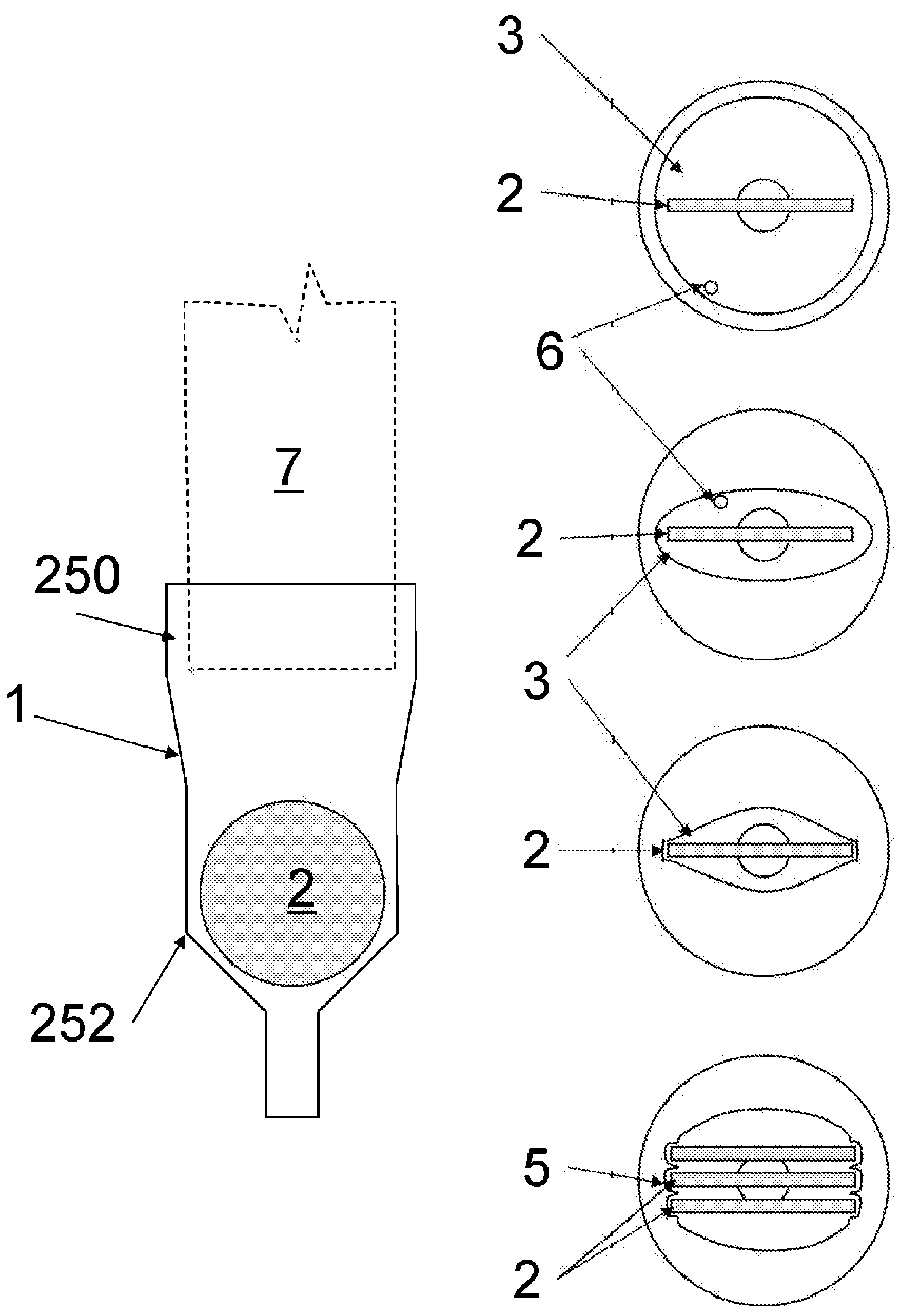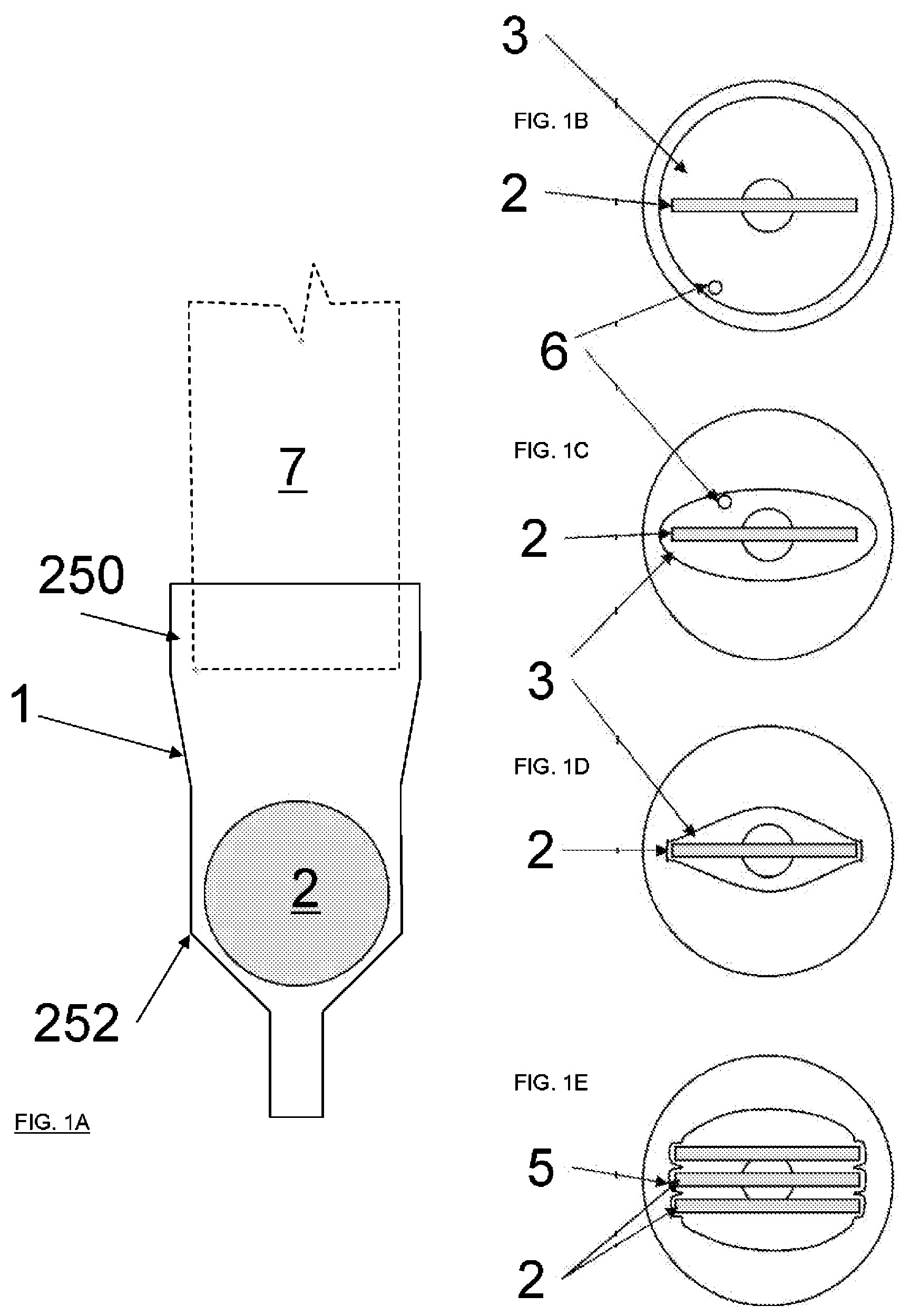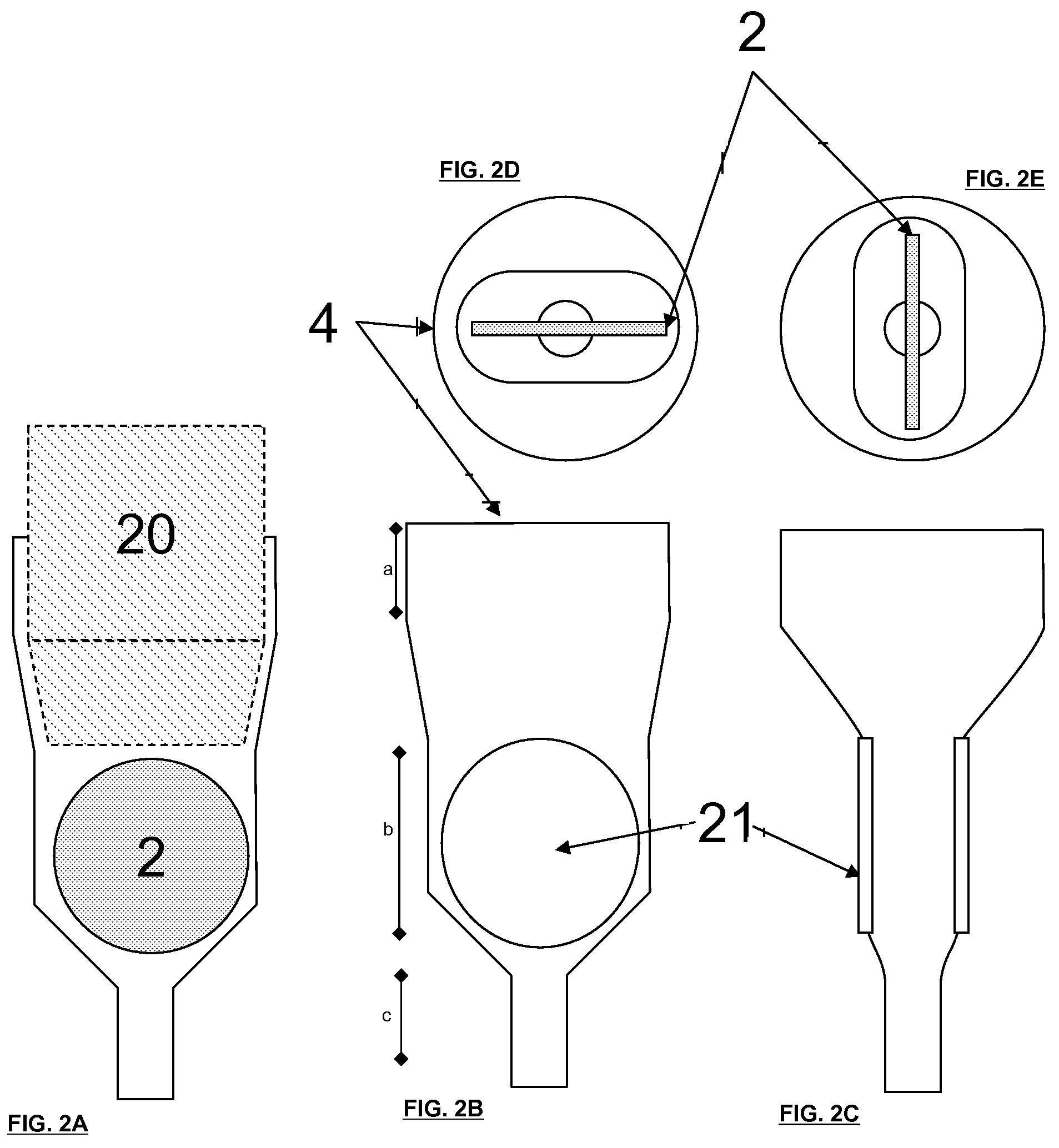Device for preparing microscopy samples
a microscopy and sample technology, applied in the field of microscopy sample preparation devices, can solve the problems of high labor intensity, difficult sample preparation, and inability to meet the requirements of the sample,
- Summary
- Abstract
- Description
- Claims
- Application Information
AI Technical Summary
Problems solved by technology
Method used
Image
Examples
example 1
Grid Holding Micropipette Device and Sample Holding Micropipette Device
[0063]One embodiment of the invention is shown in FIGS. 1A-1E. As shown in FIG. 1A a reservoir such as a tapered tube-shaped holder 1 accepts an individual TEM grid 2 (or similar study object) within its lumen. Each grid 2 is held at its periphery by the taper or size of the tube, and / or by small protrusions within the tube so that the grid 2 is held by its edges such that the study objects on the grid face are protected from damaging contact with the tube wall. A number of profiles can be used to hold the grid 2 and prevent contact of the grid faces (flat aspects) with the sides of the tube. Lumens 3 that are broad or open as shown in FIG. 1B, provide for improved flow as may be desired with higher viscosity reagents or where rapid fluid exchange is desired, while lumens 3 having a more narrow shape reduce the volume required for staining or other treatments and / or more securely prevent grid motion as shown in F...
example 2
Preparation of SEM and Similar Specimens
[0073]An additional embodiment of the invention is shown in FIGS. 7A-7D. This embodiment is an SHMP 31 in which the screen or filter 40 is comprised of a mechanically robust support produced from an electrically conductive material (such as a suitable metal), or from a material that can be treated to provide electrical conductivity. The screen or filter 40 can be readily removed from the SHMP 31 and is then self-supporting. The screen or filter element 40 is conductive to facilitate use as a specimen support for SEM, but may also be used for other applications such as optical microscopy and atomic force microscopy where conductivity is not required. The pore size of the filter or screen 40 is selected to entrap the study objects as shown in FIG. 7B. As shown in FIG. 7A, a solution (or a suspension or a powder) of small study objects 41 are placed in the SHMP 31 and are then concentrated upon the conductive filter support 40 by filtration resul...
example 3
Positive Identification
[0075]It is difficult to mark or specifically identify individual microscope specimens due to their small size. Any identification marking or device would likely be too small to be useful as it would generally not be visible or otherwise identifiable without magnification, such as with a dissection microscope. Moreover, such marking cannot be conveniently done on a grid by a user, at least not without special equipment, nor may a tissue specimen or non-biological specimen be readily marked as most specimens are no more than a few millimeters in size. Current methods for identification during preparation or in storage depend upon the location of the specimen for its identification, such as via a numbered location in a grid box or labeled vial. Since grids are the end stage of TEM specimen preparation and as a single specimen may be sectioned and mounted on dozens of grids, and as such processing may have entailed many days of labor, the logistics of grid identi...
PUM
 Login to View More
Login to View More Abstract
Description
Claims
Application Information
 Login to View More
Login to View More - R&D
- Intellectual Property
- Life Sciences
- Materials
- Tech Scout
- Unparalleled Data Quality
- Higher Quality Content
- 60% Fewer Hallucinations
Browse by: Latest US Patents, China's latest patents, Technical Efficacy Thesaurus, Application Domain, Technology Topic, Popular Technical Reports.
© 2025 PatSnap. All rights reserved.Legal|Privacy policy|Modern Slavery Act Transparency Statement|Sitemap|About US| Contact US: help@patsnap.com



